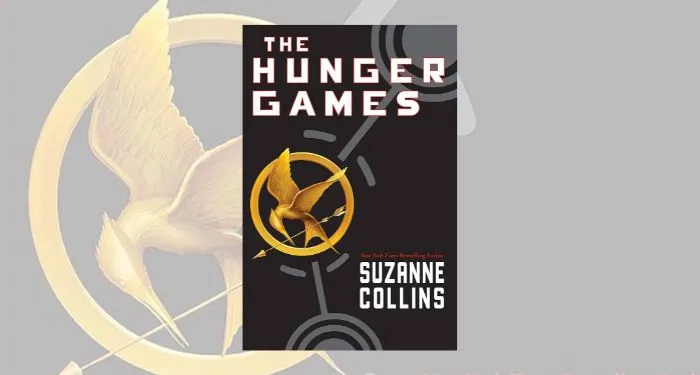
In the 15 Years Since Its Publication, What Is the Impact of The Hunger Games?
When I told my friends it’s been 15 years since the first Hunger Games book came out, they all responded with shocked versions of “What? No…There’s no way it’s been that long.” When I told my middle school-aged students, they all responded with shocked versions of “What? No…I didn’t know the book was that old.” Despite the disbelief from both camps, it’s true. It’s been 15 years since 2008 when The Hunger Games by Suzanne Collins was first published. In that time, the series has sold over 100 million copies, and it’s still on The New York Times Best Seller List, where it’s been for the last 297 weeks. That’s more than five years without missing a week! The series remains popular enough for the prequel The Ballad of Songbirds and Snakes to achieve bestseller status itself in 2020. A movie version of the prequel is coming out this month.
But the impact of the series can be measured in more than just movies and book sales. It’s a book that keeps inspiring and connecting with new readers, like my students, who are currently writing Hunger Games fanfiction even though they weren’t alive when the books were first released. It’s a book that lives on in the minds of the fans who read the books when they came out. The Hunger Games also had a major influence on the trajectory of the publishing industry and what we read.
Increased Popularity of YA Books & Dystopian Stories
The Hunger Games books came out in 2008, 2009, and 2010. They were instant hits and topics of conversation. The YA book market was already expanding at this time. But the immense success of this series was part of what drove the huge increase in sales.
To put the numbers in perspective, between 2002 and 2012, the number of YA sales from the previous decade more than doubled. Young Adult books became a powerhouse in the publishing market. The number of authors expanded. Publishing houses and literary agencies also invested deeply in growing their workforce in this category.
The Hunger Games, in particular, catapulted YA dystopian novels into the spotlight. Future bestselling series like Divergent by Veronica Roth, The Selection by Kiera Cass, The Fifth Wave by Rick Yancy, Legend by Marie Lu, Matched by Ally Condie, and Shatter Me by Tahereh Mafi built some of their readership from fans of The Hunger Games. Dystopian and YA books had, of course, been matched up before in books like The Giver by Lois Lowry, Feed by M.T. Anderson, and Uglies by Scott Westerfeld. But none of them had the same monumental sales of The Hunger Games to truly create such a publishing phenomenon.
More Adults Reading YA Books
This expansion of books and readers is in part due to the adults who began reading YA books because of The Hunger Games. Harry Potter and the Twilight series were both (obviously) huge publishing sensations previously. And both hugely expanded the number of adults who read YA books. But The Hunger Games built on this trend.
Yes, the books contained elaborate descriptions of fashion and a love triangle. But the larger philosophical questions and social critique within the books appealed to both teenage and adult readers. They still do. While many of the other mega-series of that time have become highly problematic or fallen out of favor, the characters and the messages within The Hunger Games remain accessible and relevant.
A 2012 study found that 55% of YA readers at the time of publication were adults. In fact, the most popular demographic of YA readers was 30-44. This was one of the biggest reasons for the increase in YA readers — and YA books — during this time period. One long-lasting result was for characters to age up, with more YA characters being 16-19 instead of 14-16. Older readers also created a trend of more mature content within YA books, which remains controversial among some readers.
More Unlikeable Female Heroines
It’s kind of hard to imagine now, but having an action/dystopian book with a female main character was not the norm before The Hunger Games. Not only was it rare for the main character to be female, Katniss Everdeen was not always perceived as “likable.” In the books, she can be annoying, cold, unemotional, selfish, and gruff. Above all, she is angry. And, of course, she has every right to be. She lives in a deeply unequal society, and she is being sent away from home against her will to fight in a battle to the death for other people’s entertainment.
But Katniss represented a new archetype for the highly flawed, unlikeable female heroine. Some readers hated her. But others loved her — and we didn’t love her because she was perfect. We loved her because she was human.
This archetype became hugely popular in dystopian fiction and other YA fantasy and science fiction stories.
There’s a lot more I could write about on this topic. I haven’t touched on the way the book has bled from the page into contemporary protest movements like the three-finger salute being given in Myanmar protests in 2021. I haven’t talked about side braids or the increased participation of young women in archery. But The Hunger Games influence continues within publishing and lives of the books’ readers.
Now it will continue with the film adaptation of The Ballad of Songbirds and Snakes, which I’ll admit I wasn’t 100% jazzed about. But my students, the next generation of Hunger Games fans, are over the moon excited about the latest installment.









